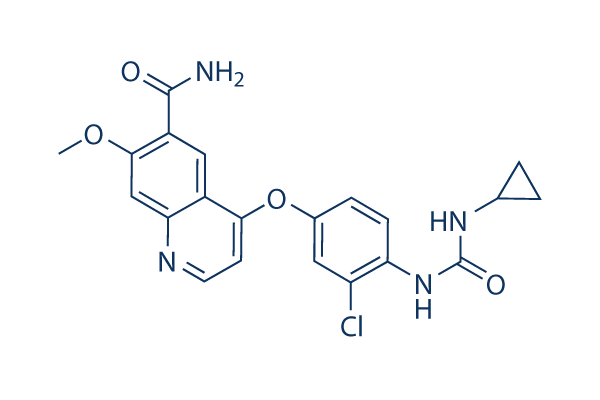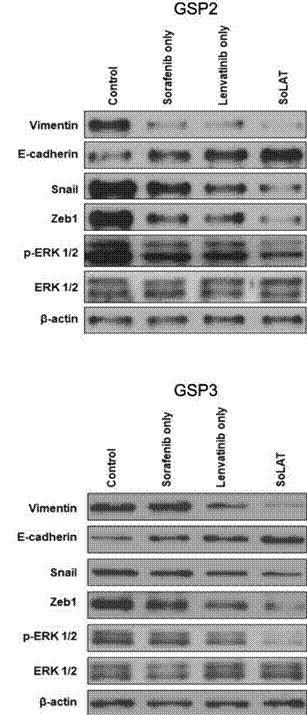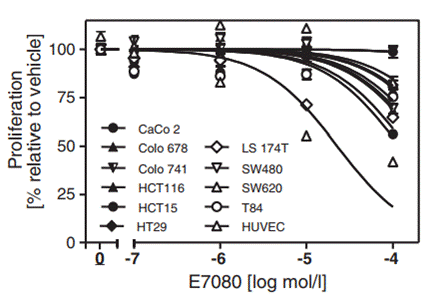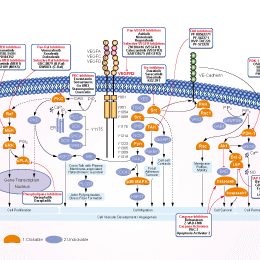
- Bioactive Compounds
- By Signaling Pathways
- PI3K/Akt/mTOR
- Epigenetics
- Methylation
- Immunology & Inflammation
- Protein Tyrosine Kinase
- Angiogenesis
- Apoptosis
- Autophagy
- ER stress & UPR
- JAK/STAT
- MAPK
- Cytoskeletal Signaling
- Cell Cycle
- TGF-beta/Smad
- DNA Damage/DNA Repair
- Compound Libraries
- Popular Compound Libraries
- Customize Library
- Clinical and FDA-approved Related
- Bioactive Compound Libraries
- Inhibitor Related
- Natural Product Related
- Metabolism Related
- Cell Death Related
- By Signaling Pathway
- By Disease
- Anti-infection and Antiviral Related
- Neuronal and Immunology Related
- Fragment and Covalent Related
- FDA-approved Drug Library
- FDA-approved & Passed Phase I Drug Library
- Preclinical/Clinical Compound Library
- Bioactive Compound Library-I
- Bioactive Compound Library-Ⅱ
- Kinase Inhibitor Library
- Express-Pick Library
- Natural Product Library
- Human Endogenous Metabolite Compound Library
- Alkaloid Compound LibraryNew
- Angiogenesis Related compound Library
- Anti-Aging Compound Library
- Anti-alzheimer Disease Compound Library
- Antibiotics compound Library
- Anti-cancer Compound Library
- Anti-cancer Compound Library-Ⅱ
- Anti-cancer Metabolism Compound Library
- Anti-Cardiovascular Disease Compound Library
- Anti-diabetic Compound Library
- Anti-infection Compound Library
- Antioxidant Compound Library
- Anti-parasitic Compound Library
- Antiviral Compound Library
- Apoptosis Compound Library
- Autophagy Compound Library
- Calcium Channel Blocker LibraryNew
- Cambridge Cancer Compound Library
- Carbohydrate Metabolism Compound LibraryNew
- Cell Cycle compound library
- CNS-Penetrant Compound Library
- Covalent Inhibitor Library
- Cytokine Inhibitor LibraryNew
- Cytoskeletal Signaling Pathway Compound Library
- DNA Damage/DNA Repair compound Library
- Drug-like Compound Library
- Endoplasmic Reticulum Stress Compound Library
- Epigenetics Compound Library
- Exosome Secretion Related Compound LibraryNew
- FDA-approved Anticancer Drug LibraryNew
- Ferroptosis Compound Library
- Flavonoid Compound Library
- Fragment Library
- Glutamine Metabolism Compound Library
- Glycolysis Compound Library
- GPCR Compound Library
- Gut Microbial Metabolite Library
- HIF-1 Signaling Pathway Compound Library
- Highly Selective Inhibitor Library
- Histone modification compound library
- HTS Library for Drug Discovery
- Human Hormone Related Compound LibraryNew
- Human Transcription Factor Compound LibraryNew
- Immunology/Inflammation Compound Library
- Inhibitor Library
- Ion Channel Ligand Library
- JAK/STAT compound library
- Lipid Metabolism Compound LibraryNew
- Macrocyclic Compound Library
- MAPK Inhibitor Library
- Medicine Food Homology Compound Library
- Metabolism Compound Library
- Methylation Compound Library
- Mouse Metabolite Compound LibraryNew
- Natural Organic Compound Library
- Neuronal Signaling Compound Library
- NF-κB Signaling Compound Library
- Nucleoside Analogue Library
- Obesity Compound Library
- Oxidative Stress Compound LibraryNew
- Plant Extract Library
- Phenotypic Screening Library
- PI3K/Akt Inhibitor Library
- Protease Inhibitor Library
- Protein-protein Interaction Inhibitor Library
- Pyroptosis Compound Library
- Small Molecule Immuno-Oncology Compound Library
- Mitochondria-Targeted Compound LibraryNew
- Stem Cell Differentiation Compound LibraryNew
- Stem Cell Signaling Compound Library
- Natural Phenol Compound LibraryNew
- Natural Terpenoid Compound LibraryNew
- TGF-beta/Smad compound library
- Traditional Chinese Medicine Library
- Tyrosine Kinase Inhibitor Library
- Ubiquitination Compound Library
-
Cherry Picking
You can personalize your library with chemicals from within Selleck's inventory. Build the right library for your research endeavors by choosing from compounds in all of our available libraries.
Please contact us at info@selleckchem.com to customize your library.
You could select:
- Antibodies
- Bioreagents
- qPCR
- 2x SYBR Green qPCR Master Mix
- 2x SYBR Green qPCR Master Mix(Low ROX)
- 2x SYBR Green qPCR Master Mix(High ROX)
- Protein Assay
- Protein A/G Magnetic Beads for IP
- Anti-Flag magnetic beads
- Anti-Flag Affinity Gel
- Anti-Myc magnetic beads
- Anti-HA magnetic beads
- Poly DYKDDDDK Tag Peptide lyophilized powder
- Protease Inhibitor Cocktail
- Protease Inhibitor Cocktail (EDTA-Free, 100X in DMSO)
- Phosphatase Inhibitor Cocktail (2 Tubes, 100X)
- Cell Biology
- Cell Counting Kit-8 (CCK-8)
- Animal Experiment
- Mouse Direct PCR Kit (For Genotyping)
- New Products
- Contact Us
research use only
Lenvatinib (E7080) VEGFR inhibitor
Lenvatinib is a multi-target inhibitor, mostly for VEGFR2(KDR)/VEGFR3(Flt-4) with IC50 of 4 nM/5.2 nM, less potent against VEGFR1/Flt-1, ~10-fold more selective for VEGFR2/3 against FGFR1, PDGFRα/β in cell-free assays. This compound also inhibits FGFR1-4, PDGFR, Kit (c-Kit), RET (c-RET), and shows potent antitumor activities. Phase 3.

Chemical Structure
Molecular Weight: 426.85
Purity & Quality Control
Batch:
Purity:
99.97%
99.97
Products Often Used Together with Lenvatinib (E7080)
It and KPT 9274 combination exhibit superior anti-tumor activity in anaplastic thyroid cancer cells (8505C) subcutaneous xenografts.
Related Products
| Related Targets | VEGFR1 VEGFR2 VEGFR3 | Click to Expand |
|---|---|---|
| Related Products | Cediranib (AZD2171) Vatalanib (PTK787) 2HCl Linifanib (ABT-869) Anlotinib (AL3818) dihydrochloride SAR131675 Apatinib Apatinib (YN968D1) mesylate Ki8751 ZM 323881 HCl Semaxanib (SU5416) SU5402 Cediranib Maleate Motesanib Diphosphate (AMG-706) Brivanib (BMS-540215) Motesanib (AMG-706) ZM 306416 KRN 633 Telatinib Fruquintinib SKLB1002 | Click to Expand |
| Related Compound Libraries | Kinase Inhibitor Library Tyrosine Kinase Inhibitor Library PI3K/Akt Inhibitor Library Cell Cycle compound library Angiogenesis Related compound Library | Click to Expand |
Signaling Pathway
Cell Culture and Working Concentration
| Cell Lines | Assay Type | Concentration | Incubation Time | Formulation | Activity Description | PMID |
|---|---|---|---|---|---|---|
| TPC-1 and K1 cells | Function assay | 50 μM | 24 h | The inhibitory effects of lenvatinib on the viability of both cell lines were not influenced by the leptin treatment. | 30906321 | |
| ATC cells | Function assay | 1, 25 and 50 μM | 72 h | Phosphorylated/non-phosphorylated Akt or ERK1/2 proteins (evaluated by ELISA) in lenvatinib-treated samples were significantly reduced in ATC cell cultures. | 29517103 | |
| HCC cell lines Hep3B2.1-7, HuH-7, and JHH-7 | Proliferation assay | 6 days | Lenvatinib showed selective and potent antiproliferative activity against the HCC cell lines Hep3B2.1‐7, HuH‐7, and JHH‐7, with IC50 values of 0.23, 0.42, and 0.64 μmol/L, respectively. | 29733511 | ||
| HT29 cells | Cytotoxicity assay | 25, 50 nM | 72 h | cytotoxic dose: 50 nM and noncytotoxic dose: 25 nM | 24815456 | |
| DX3 and U2OS cells | Function assay | 1 μM and 10 μM | 16 hours | Lenvatinib inhibit tumor cells migration and invasion at concentrations that both inhibit its known targets and are achievable clinically. | 21781317 | |
| Click to View More Cell Line Experimental Data | ||||||
Mechanism of Action
| Targets |
|
|---|
In vitro |
||||
| In vitro | E7080, as a potent inhibitor of in vitro angiogenesis, shows a significantly inhibitory effect on VEGF/KDR and SCF/Kit signaling. According to the in vitro receptor tyrosine and serine/threonine kinase assays, this compound inhibits Flt-1, KDR, Flt-4 with IC50 of 22, 4.0 and 5.2 nM, respectively. In addition to these kinases, this compound also inhibits FGFR1 and PDGFR tyrosine kinases with IC50 value of 46, 51 and 100 nM for FGFR1, PDGFRα and PDGFRβ, respectively. [1] This compound potently inhibits phosphorylation of VEGFR2 (IC50, 0.83 nM) and VEGFR3 (IC50, 0.36 nM) in HUVECs which is stimulated by VEGF and VEGF-C, respectively. [2] A recent study shows that this compound treatment (both at 1 μM and 10 μM) results in a significant inhibition of cell migration and invasion by inhibiting FGFR and PDGFR signaling. [3] |
|||
|---|---|---|---|---|
| Kinase Assay | In vitro kinase assay [1] | |||
| Tyrosine kinase assays are performed by HTRF (KDR, VEGFR1, FGFR1, c-Met, EGFR) and ELISA (PDGFRβ), using the recombinant kinase domains of receptors. In both assays, 4 μL of serial dilutions of this compound are mixed in a 96-well round plate with 10 μL of enzyme, 16 μL of poly (GT) solution (250 ng) and 10 μL of ATP solution (1 μM ATP) (final concentration of DMSO is 0.1%). In wells for blanks, no enzyme is added. In control wells no test article is added. The kinase reaction is initiated by adding ATP solution to each well. After 30-minute incubation at 30°C, the reaction is stopped by adding 0.5 M EDTA (10 μL/well) to the reaction mixture in each well. Dilution buffer adequate to each kinase assay is added to the reaction mixture. In the HTRF assay, 50 μL of the reaction mixture is transferred to a 96-well 1/2 area black EIA/RIA plate, HTRF solution (50 μL/well) is added to the reaction mixture, and then kinase activity is determined by measurement of fluorescence with a time-resolved fluorescence detector at an excitation wavelength of 337 nm and an emission wavelengths of 620 and 665 nm. In the ELISA, 50 μL of the reaction mixture is incubated in avidin coated 96-well polystyrene plates at room temperature for 30 minutes. After washing with wash buffer, PY20-HRP solution (70 μL/well) is added and the reaction mixture is incubated at room temperature for 30 minutes. After washing with wash buffer, TMB reagent (100 μL/well) is added to each well. After several minutes (10–30 minutes), 1 M H3PO4 (100 μL/well) is added to each well. Kinase activity is determined by measurement of absorbance at 450 nm with a microplate reader. | ||||
| Cell Research | Cell lines | HUVECs | ||
| Concentrations | 0-10 μM | |||
| Incubation Time | 72 hours | |||
| Method | HUVECs (1,000 cells in each well in serum-free medium containing 2% fetal bovine serum) and L6 rat skeletal muscle myoblasts (5,000 cells in each well in serum-free DMEM) are dispensed in a 96-well plate and incubated overnight. This compound and either VEGF (20 ng/mL) or FGF-2 (20 ng/mL) containing 2% fetal bovine serum and PDGFβ (40 ng/mL) are added to each well. Cells are incubated for 3 days and then the ratios of surviving cells are measured by WST-1 reagent. For proliferation assay, samples are duplicated and three separate experiments are done. |
|||
| Experimental Result Images | Methods | Biomarkers | Images | PMID |
| Western blot | Vimentin / E-cadherin / Snail / Zeb1 β-catenin Ki-67 / Cyclin D1 / CDK4 / p21 / p53 / Apaf-1 / p-NFκB / Bcl-2 / Cleaved-caspase 3 phospho-RET phospho-FGFR1 / FGFR1 /phospho-FRS2 / FRS2 / phospho-MEK / phospho-ERK |

|
30286728 | |
| Growth inhibition assay | Cell viability |

|
25425971 | |
In Vivo |
||
| In vivo | When orally administrated in a H146 xenograft model, Lenvatinib (E7080) inhibits the growth of H146 tumor at 30 and 100 mg/kg in a dose-dependent manner and leads to tumor regression at 100 mg/kg. Furthermore, this compound at 100 mg/kg decreases microvessel density more than anti-VEGF antibody and imatinib treatment. [1] It significantly inhibits local tumor growth in a MDA-MB-231 mammary fat pad (m.f.p.) model with RTVs (calculated tumor volume on day 8/tumor volume on day 1) of 0.81, and reduces both angiogenesis and lymphangiogenesis of established metastatic nodules of MDA-MB-231 tumor in the lymph nodes. [2] |
|
|---|---|---|
| Animal Research | Animal Models | H146 tumor cells are implanted subcutaneously (s.c.) into the flank region of female BALB/c nude mice. |
| Dosages | ≤100 mg/kg | |
| Administration | Administered via p.o. | |
| NCT Number | Recruitment | Conditions | Sponsor/Collaborators | Start Date | Phases |
|---|---|---|---|---|---|
| NCT06161558 | Not yet recruiting | Neoplasms |
National Cancer Institute (NCI)|National Institutes of Health Clinical Center (CC) |
May 15 2024 | Phase 1 |
| NCT05846724 | Not yet recruiting | Kaposi Sarcoma|Classic Kaposi Sarcoma|Refractory Kaposi Sarcoma |
Fondazione IRCCS Ca'' Granda Ospedale Maggiore Policlinico |
February 1 2024 | Phase 2 |
| NCT05903833 | Not yet recruiting | Recurrent Vulvar Cancer|Persistent Vulvar Cancer|Metastatic Vulva Cancer|Locally Advanced Vulvar Cancer |
AGO Research GmbH |
January 1 2024 | Phase 2 |
| NCT05901194 | Not yet recruiting | Hepatocellular Carcinoma Non-resectable |
Assistance Publique - Hôpitaux de Paris|Laboratoire EISAI |
June 2023 | Phase 1|Phase 2 |
References |
|
Chemical Information
| Molecular Weight | 426.85 | Formula | C21H19ClN4O4 |
| CAS No. | 417716-92-8 | SDF | Download SDF |
| Synonyms | E7080 | ||
| Smiles | COC1=CC2=NC=CC(=C2C=C1C(=O)N)OC3=CC(=C(C=C3)NC(=O)NC4CC4)Cl | ||
Storage and Stability
| Storage (From the date of receipt) | |||
|
In vitro |
DMSO : 20 mg/mL ( (46.85 mM) Moisture-absorbing DMSO reduces solubility. Please use fresh DMSO.) Water : Insoluble Ethanol : Insoluble |
Molecular Weight Calculator |
|
In vivo Add solvents to the product individually and in order. |
In vivo Formulation Calculator |
|||||
Preparing Stock Solutions
Molarity Calculator
In vivo Formulation Calculator (Clear solution)
Step 1: Enter information below (Recommended: An additional animal making an allowance for loss during the experiment)
mg/kg
g
μL
Step 2: Enter the in vivo formulation (This is only the calculator, not formulation. Please contact us first if there is no in vivo formulation at the solubility Section.)
% DMSO
%
% Tween 80
% ddH2O
%DMSO
%
Calculation results:
Working concentration: mg/ml;
Method for preparing DMSO master liquid: mg drug pre-dissolved in μL DMSO ( Master liquid concentration mg/mL, Please contact us first if the concentration exceeds the DMSO solubility of the batch of drug. )
Method for preparing in vivo formulation: Take μL DMSO master liquid, next addμL PEG300, mix and clarify, next addμL Tween 80, mix and clarify, next add μL ddH2O, mix and clarify.
Method for preparing in vivo formulation: Take μL DMSO master liquid, next add μL Corn oil, mix and clarify.
Note: 1. Please make sure the liquid is clear before adding the next solvent.
2. Be sure to add the solvent(s) in order. You must ensure that the solution obtained, in the previous addition, is a clear solution before proceeding to add the next solvent. Physical methods such
as vortex, ultrasound or hot water bath can be used to aid dissolving.
Tech Support
Answers to questions you may have can be found in the inhibitor handling instructions. Topics include how to prepare stock solutions, how to store inhibitors, and issues that need special attention for cell-based assays and animal experiments.
Tel: +1-832-582-8158 Ext:3
If you have any other enquiries, please leave a message.
* Indicates a Required Field






































